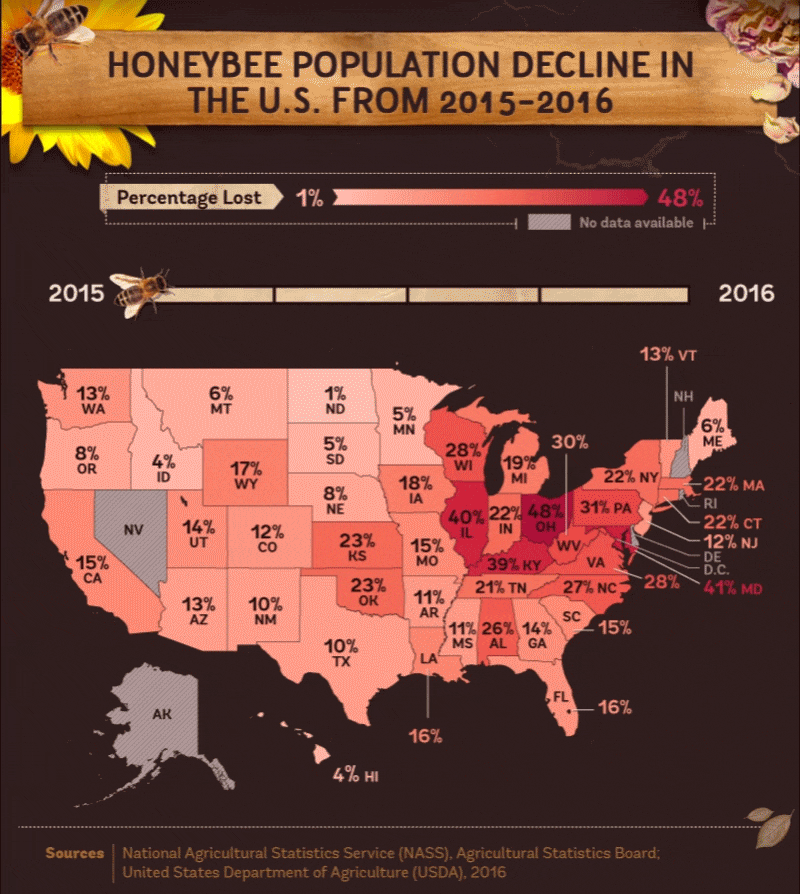Packing her bags to go home for the first time in over four months, Maasai ranger Purity Lakara -- who patrols lands in Kenya's Amboseli National Park, known for its free-roaming elephants and views of Mount Kilimanjaro -- is overjoyed to be seeing her family for the first time since the Covid-19 pandemic was declared.
"I missed eating together, playing and hanging around with my baby girl, fetching water for my mum -- even helping my brothers herding cattle. I have missed everything that we usually do while I'm at home," she says.
Lakara, 23, is one of eight women -- the first in their families to secure employment -- who make up Team Lioness, a unit within the Olugului Community Wildlife Rangers (OCWR).
The rangers patrol the Olugului/Olarashi Group Ranch (OOGR), a 580-square-mile horseshoe of community-owned land that almost encircles Amboseli National Park, a safari destination 134 miles southeast of Nairobi.

Children run to welcome Purity Amleset Lakara, a member of the all-female IFAW-supported Team Lioness on her arrival at her home village in Meshenani, Amboseli, in Kenya. Paolo Torchio/IFAW
When Kenya closed its regional and international borders and the tourism industry and livestock markets on which the community depends disappeared, OCWR canceled all leave and asked its rangers, including Team Lioness, to stay at their posts indefinitely to protect wildlife from desperate poachers. Now that the country is cautiously yet optimistically opening and safari visitors are returning, the rangers are finally able to return to their villages, two by two.
When Lakara arrived in Meshenani on July 29, she was met by neighbors and family members who escorted her to her home, singing and clapping as she cradled her 2-year-old daughter.

Purity Amleset Lakara is escorted home by her eldest brother Maantoi Lakara and other members of her family. Paolo Torchio/IFAW
"My mother said that she was very happy right now because I'm back. She say that they have been longing for this day, so they are all here near me, enjoying and celebrating again," says Lakara, who is the sole breadwinner for her 11-member family.
Genesis of Team Lioness
Team Lioness was established by the global nonprofit
International Fund for Animal Welfare (IFAW) in early 2019 after Maasai community leader Kiruyan Katamboi, affectionately referred to as Mama Esther, challenged the organization to employ women from the community as rangers.

A typical day for Team Lioness might begin at 5 a.m. with a run and breakfast, followed by a briefing and morning patrol, which typically takes four hours. Paolo Torchio/IFAW
Because Maasai communities are patriarchal, women are excluded from leadership and decision making and the community ranger unit that patrols the Group Ranch was exclusively male.
Christopher Kiarie, IFAW program operations and grants manager, says that while IFAW was enthusiastic about the suggestion, men in the OCWR and wider community were skeptical that women were up to the job. The community lands are vast, almost half the size of the state of Rhode Island, and a typical OCWR patrol can cover 12 miles of difficult terrain on foot, often in poor conditions.
Unlike the Kenya Wildlife Service, which patrols the Amboseli National Park, the OCWR are unarmed, so have to rely on skill when dealing with dangerous animals or violent people and call KWS for back-up if they think a situation might turn nasty.
Even the women nominated for Team Lioness, one by each of the community's eight clans, had their doubts.
"Before I was thinking like I would not make it," admits ranger Sharon Nankinyi. "But after we were training, then we became very strong ladies. We proved to the community that what a man can do, a woman can do better."
Grueling work
Under normal conditions, Team Lioness rangers typically work three weeks on, when they rotate around the OCWR's six camps and mobile unit, and one week off.
A typical day might begin at 5 a.m. with a run and breakfast, followed by a briefing and morning patrol, which typically takes four hours. Depending on their daily assignments, the rangers might spend the afternoon on base, ready to respond to an emergency call before a debrief of the day's activities.
Other than occupying separate sleeping and bathing quarters, they do exactly the same job as their 68 male colleagues and are assigned patrols in co-ed groups of varying sizes.

Community ranger Eunice Mantei Nkapaiya sits with her colleagues in their camp. The women were away from their families for months while they worked the bush. Will Swanson/IFAW
They note the locations and activities of wildlife, talk with members of the local community to learn of any suspicious or problematic activity, and pitch in whenever help is needed -- perhaps getting a stuck baby elephant out of a muddy waterhole or locating children who have roamed too far from the village.
While two-thirds of the men in the ranger unit are illiterate, the members of Team Lioness are educated to the equivalent of a high school diploma and excel at writing the reports essential to IFAW's "tenBoma" approach to wildlife security, in which the organization partners with other NGOs and ranger teams, community members and Interpol to combine actionable local intelligence and data analysis.
OCWR's Director of Operations Patrick Papatiti says as he observed the team working to persuade community members from hunting lions or hyenas that killed livestock, he could see that the male rangers, selected because they ranked among the community's best warriors, have changed their attitudes working with women.
"I can without a doubt see [the men] now take them as colleagues," he says.
The danger of being a ranger
Working as a wildlife ranger anywhere in the world is a tough, dangerous gig.
Every year, the International Ranger Federation and Thin Green Line Foundation mark World Ranger Day on July 31 by publishing a roll of honor commemorating the rangers and staff in similar roles known to have died on duty over the past 12 months.
Of the
138 deaths recorded on this year's roll, almost a third were homicides. Alongside natural causes, drownings, wildlife attacks and motor vehicle accidents, their 2020 roll featured a new cause-of-death category: Covid-19, to which five of the rangers listed had succumbed.
The pandemic has only made Team Lioness' job harder.

Wildlife rangers keep their distance from local herders while interviewing them for information. Will Swanson/IFAW
Huge losses in tourism revenue -- Kiarie says that Amboseli National Park's revenues declined more than 90% -- forced government-funded agencies in the region to cut back on patrols.
Because the OCWR's funding via IFAW is donation-based and not affected in the same way, the community rangers stepped up operations to fill the gap. During a week when the risk of poaching was deemed particularly high, Team Lioness scaled up from its typical one or two patrols to three patrols a day, collectively covering more than 35 miles on foot.
Social distancing measures have made it hard for rangers to meet with community members to gather intelligence about potential poaching activity or resolve issues. Communication is already hard to maintain on community lands because of poor cell reception, a problem compounded by wet weather during this time of year.
When camp solar panels can't generate power, the rangers have to turn their phones off to conserve battery, further minimizing opportunities to receive timely tips on poaching activity -- something even more pressing now when many people have sold much of their livestock and hardships are more keenly felt.
"Since Corona started, there's bushmeat poaching because now people are jobless. [They] end up killing gazelle, killing giraffes, so that [they] can feed their children," says ranger Nankinyi.

Depending on their daily assignments, the rangers might spend the afternoon on base, ready to respond to an emergency call before a debrief of the day's activities. Paolo Torchio/IFAW
After receiving a tip from the local community in April, the OCWR dispatched a patrol -- which included three members of Team Lioness -- and discovered that four men had killed a giraffe the day prior, roasted the meat and left what they couldn't eat to collect later. The rangers called on KWS for support and set an ambush. When the men returned, they were arrested.
"It's very bad when the same people that you are working with [in the community], telling them the importance of wild animals, and you find them killing those wild animals," says Ruth Sikeita, one of the rangers on the scene.
Papatiti says that while bushmeat poaching incidents have increased over time, the killing of elephants for ivory has declined. He estimates that between three to five elephants were poached on community lands annually from when the OCWR was established in 2010 until IFAW began to support the unit in 2018, when only one elephant was lost. No more elephants have been killed on the Group Ranch since.
"I attribute the success to dedication from rangers and how we built a very good relationship with the community, which is our source of intel," explains Papatiti.
Impact of Covid-19
The members of Team Lioness also have more familiar worries associated with Covid-19.

Being a ranger is a challenging job, but the rangers say the forced separation from their families has been the worst part. Paolo Torchio/IFAW
The WHO didn't respond to requests for case counts in Amboseli, but Papatiti believes 17 cases and five deaths have been reported there, although he has no data specific to the community ranch.
IFAW provides masks, gloves and hand sanitizer to protect rangers rotating to their home villages against contracting Covid-19. If any of the rangers feel unwell, OCWR has arranged for staff from a nearby hospital to test them at the base.
Now that Kenya is slowly opening up -- interregional travel was permitted from July and international air travel resumed on August 1 -- local people have concerns that the increased movement of people, especially those from outside Kenya, carries risk.
"We are seeing on the TV, hearing that Europe and the US are the countries most affected, so we have that fear they will bring the disease here," says Ruth Sikeita.
There are other pandemic-related shifts, too. Because the schools have been closed for so long, children will likely fall out of the education system as they try to find ways to support their family. Young women who doubt the pandemic will end may get married earlier.
"It is very sad. We need the ladies to get the education so that they can join us in Team Lioness," says Nankinyi.
On a personal level, the rangers say the forced separation from their families has been the worst part.
A changing community

After four months in the field Ruth Sekeita Losiaik a member of the IFAW-supported Team Lioness, was reunited with her two-year-old son Bonham Shirim. Paolo Torchio/IFAW
Back in her village, reunited with her two children, Ruth Sikeita comments on how her 8-year-old daughter Priscilla has grown taller and her son Bonham, 3, is talking more. She's grateful to her mother-in-law, who is supportive of wildlife protection initiatives, for caring for her children while she was working.
"They are very healthy, you can now see," she says, lightly pinching her son's arm. "They're very clean. So I thank her, and to the whole community."
Team Lioness' success has not only changed perceptions around the OCWR but is influencing attitudes to gender roles in the community.
"Before, we were not allowed to speak to the men around, we are not allowed to speak to our fathers in the table, to share or to to eat supper or breakfast all together," says Nankinyi.
"We were just thinking like we are nothing to the community, we are just fit for fetching water, giving birth. But now we've broken the taboo that we can work with the men."
Looking forward to a post-pandemic world, the members of Team Lioness want to continue to develop their skills and knowledge, and impact on the community. Christopher Kiarie says that IFAW will work with telecommunication companies and the local government to improve coverage across community lands and will soon deploy a radio system secured for the rangers with assistance from the EU.
"Once the radio equipment is operationalized, communication amongst the community rangers will be boosted in a big way," he says.
Every member of Team Lioness wants to see more women join their ranks.
"In the community there are more ladies who are admiring this job, so I'm sure that if that opportunity comes out, there are more ladies will be coming here for an interview. It will be even more numbers than what is expected," says Purity Lakara, adding that she wants to see the number of female rangers equal or exceed the number of men.
Papatiti is also eager to recruit more women.
"The number will be determined by the availability of funds. When I am given a green light I will kick start the process," he says.

 The wheels of business and human food compulsions are implacable and totally lacking in compassion. This is a downed cow, badly hurt, but still being dragged to slaughter. Click on this image to fully appreciate this horror repeated millions of times every day around the world. With plentiful non-animal meat substitutes that fool the palate, there is no longer reason for this senseless suffering. And meat consumption is a serious ecoanimal crime. The tyranny of the palate must be broken. Please consider changing your habits and those around you in this regard.
The wheels of business and human food compulsions are implacable and totally lacking in compassion. This is a downed cow, badly hurt, but still being dragged to slaughter. Click on this image to fully appreciate this horror repeated millions of times every day around the world. With plentiful non-animal meat substitutes that fool the palate, there is no longer reason for this senseless suffering. And meat consumption is a serious ecoanimal crime. The tyranny of the palate must be broken. Please consider changing your habits and those around you in this regard.






























